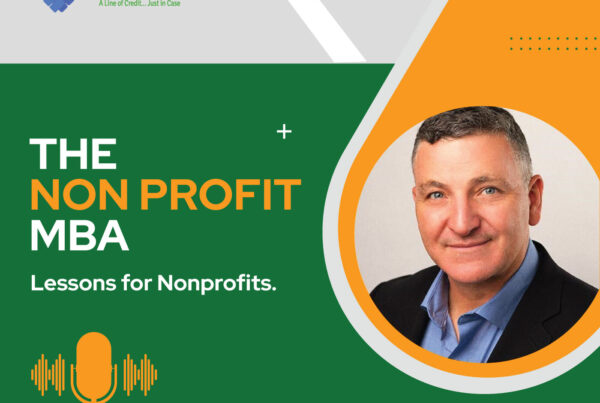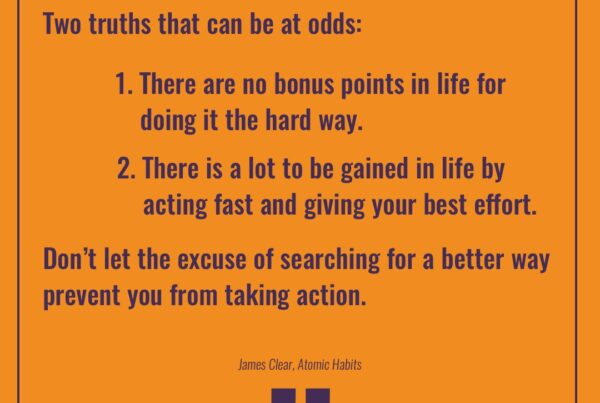A few weeks ago I listened to a terrific webinar sponsored by the Minnesota Council of Nonprofits with guest speaker Andy Robinson. If you’ve not heard of him, he’s a great guy who provides consulting and coaching for grassroots organizations.
Why I loved the session from Andy is that he shared a step-by-step common sense approach to increasing the numbers of “askers” on your development team. No they aren’t board members, though they could be. They are your staff. In fact ALL of your staff.
Andy says in many organizations “what is usually lacking is enough people to do the asking.” He then went on to share a case study about Toxics Action that shuts down for two weeks a year and has ALL staff engage in their major gifts solicitations. Face to face asks are made by everyone from the admin staff to the program manager. When people are hired they are told: everyone is a fundraiser here. No one is exempt. We’ll teach you how to do it. And they do.
While your organization may or may not be able to devote the kind of focus Toxics Action does, this model is adaptable to different size staffs and different kinds of organizations.
The reality is donors will give five to ten times more in person than they will give via mail. So at Toxics Action they train their staff to go out and meet with donors. This kind of fundraising is like conducting your own market research. You get to ask donors questions face-to-face and really learn more about why they give.
Andy referred to this model as the Ambassador model. What I believe, as does Andy, is that “more money exists out there…it’s just hidden from your view.”
What I learned from Andy:
To be successful raising money from individual you need four things:
- A strong case.
- A list of prospective donors.
- People to do the asking.
- A system in place to track data, money, and donor recognition.
What can make a difference in increasing your fundraising dollars?
- Set up time to train everyone in what the current objections might be to making a larger gift right now.
- Allow people time to get comfortable answering those objections with thoughtful answers and comments.
- Practice. Practice. Practice.
- Everyone participates.
Here’s part of the compelling story Andy shared:
After five years of building their major gifts program, Toxics Action now raises $110,000 per year — one-quarter of its annual budget — from individual major gifts of at least $250. Using the time and talents of eight staff members, only one of whom is a full-time fundraiser, the organization conducts 250 to 300 donor visits each year in homes spread across six states.
In an article you can download, Andy shares in detail about the Toxic Actions story and shares a powerful example of how a married couple increased their gift from $45 to $1500 using this model.
The full article is available from Grassroots Fundraising Journal In the “Author’s last name” box, enter Robinson.
Note: The Journal charges $3 to download each article. They deserve your support and it’s worth it.
To view or download the free slide show from the webinar with Andy visit the MCN website.
This post was included in Withism’s from Lori: Boldness, Clarity & Wisdom for Fundraising Professionals Making a Difference (Volume 1), now available in paperback, on Kindle, and Nook.








Lori,
Andy is just fabulously practical, isn’t he. And here is another great example of a point that I constantly make… it isn’t an axiom that you have to have a board that fundraises to be successful fundraisers. I see way to many development staff spending more time moaning about why their board members won’t raise money than they do getting out and talking to donors.
It also illustrates another point I make a lot… the staff who are directly involved in the work of the organization can be highly inspirational. After all, they see the changes and the challenges every day. With training, they can learn to talk very powerfully about their work and make a strong case for support.
And that listening part… most powerful of all. Not just for raising money, but for creating a stronger organization. I talk about that in 7 Ways that Fundraising can be a Powerful Program Tool at http://tinyurl.com/3xzxhbp
Gayle, I know this is an area of great importance in your work. I, too, believe there are better ways to engage board members than fundraising AND that staff can and should play a deeply meaningful role in fundraising. Thanks for the read and post! And for sharing your own resource!
You can check with Toxics Action Center, but the updated numbers are that they now raise about 50% of their $400K annual budget from individuals — which is way up from when this article was written several years ago. AR
Lori,
This is great advice. It covers training, doing appropriate homework before going out, and utilizing more people who should be passionate about the organization. It sounds like Toxics Action has a good thing going and other organizations should take notice.
Andy and Roger,
Thanks for the update & comments!
Love it!! What a great way to get staff involved in fundraising. And donors love hearing first-hand from front-line staff. No wonder the results are so great!
Thanks for sharing Lori!
Sandy
Hi Gayle, Lori and all — This is old info, but I remember AFP data stating the the typical development director stays with an organization 18-24 months before moving on. If you ask them why the move around so much, a primary complaint is, “The board won’t raise money.” In other words, the professionals depend on the volunteers. Meanwhile, the volunteers expect the professionals to lead: “Don’t we pay people to do that?”
From my perspective, both sides have this wrong (another example of avoidance behavior?) In a healthy organization, everyone has a role to play in fundraising, regardless of role or job title. The trick is setting clear expectations and providing appropriate structure and support.
Hear. Hear! Andy, well said. It’s setting the expectations for everyone and then providing the structure that causes success that works. Figuring out those expectations and putting in the structure is my favorite part of working with organizations who are ready for changing that old paradigm.
Thanks for the great webinar & your spot on comment, Andy!